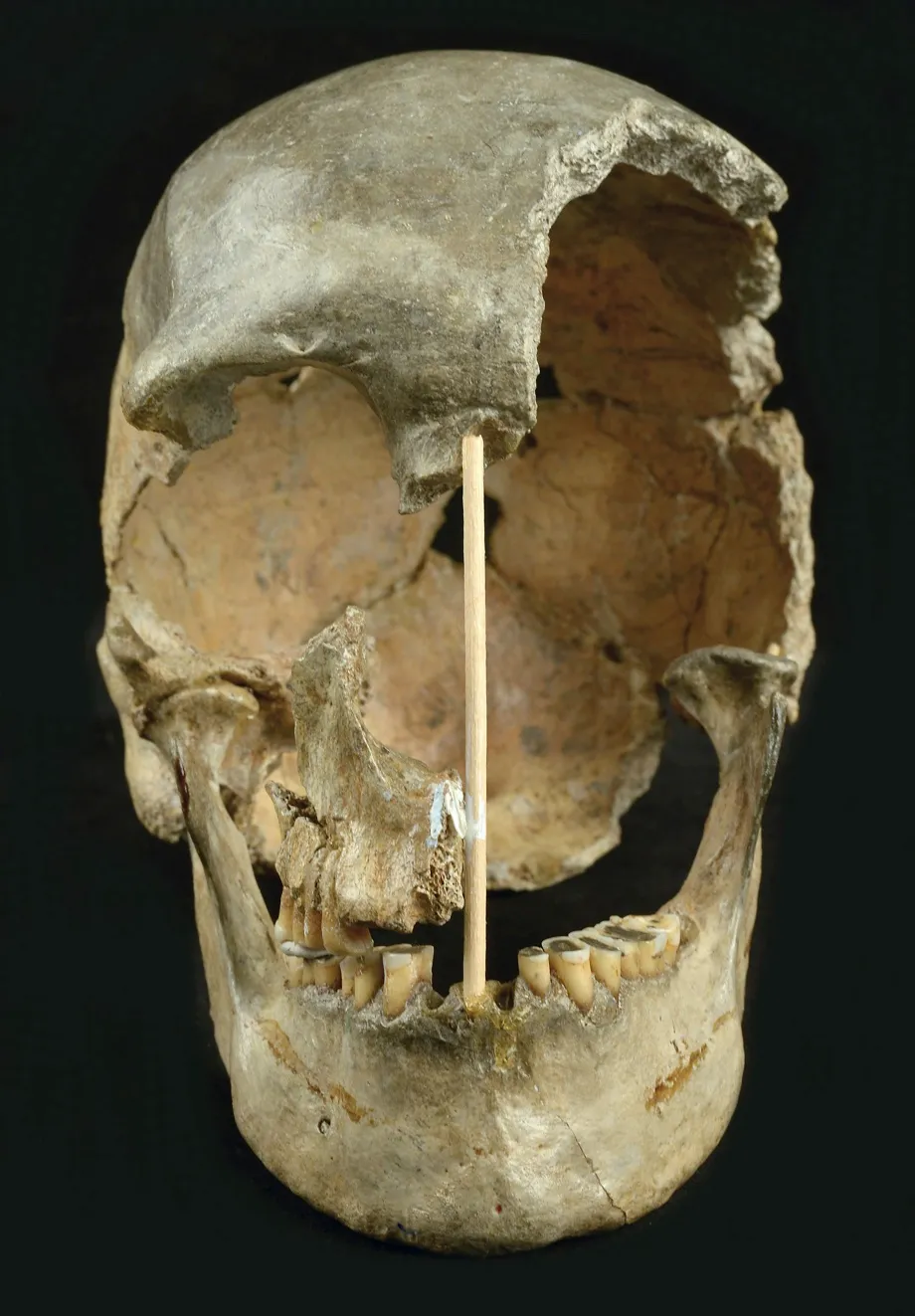Remains thought to be more than 45,000 years old have been used to reconstruct a complete set of DNA – known as a genome – of an early modern human.
The genetic information comes from a skull unearthed at a site near Prague in the Czech Republic. It was named Zlatý kůň, 'golden horse' in Czech, and is believed to be the oldest reconstructed modern human genome to date.
The findings, published in the journal Nature Ecology & Evolution, suggest the woman had 3 per cent Neanderthal ancestry and lived nearer the time when Neanderthals were interbreeding with modern humans.

Previously, the oldest known complete DNA sequence for modern humans came from a 45,000-year-old leg bone of a male found in a Siberian town called Ust’-Ishim.
While both the new genome and the Ust’-Ishim genome contained roughly the same amount of Neanderthal DNA, researchers believe Zlatý kůň's genome could be a few hundred years older, as hersegments with Neanderthal ancestry were on average much longer.
The team believes the woman was part of one of the earliest modern human populations in Eurasia – after modern humans left Africa some 50,000 years ago.
This was before the existence of the populations that gave rise to present-day Europeans and Asian lineages which split around 41,000 years ago.
Read more about Neanderthals:
- Neanderthals could talk like humans, study suggests
- 40,000-year-old yarn suggests Neanderthals had basic maths skills
“We can say… that she lived 60 to 80 generations after Neanderthals and people that left Africa mixed with each other," said Prof Johannes Krause, senior author of the study and director at the Max Planck Institute for Evolutionary Anthropology.
“And that makes [the skull] actually quite old – the oldest modern human genome that has been sequenced so far.”
However, the team adds that the Zlatý kůň woman belonged to a population that did not leave genetic descendants in modern-day Europeans or Asians, becoming extinct nearly 40,000 years ago.

One explanation is that a massive volcanic event in Italy – known as the Campanian Ignimbrite eruption – may have affected climate in the northern hemisphere and reduced the survival chances of Neanderthals and early modern humans in large parts of Europe.
“It is quite intriguing that the earliest modern humans in Europe ultimately didn’t succeed," saidKrause.
“Just as with Ust’-Ishim and the so-far oldest European skull from Oase 1, Zlatý kůň shows no genetic continuity with modern humans that lived in Europe after 40,000 years ago.”
Reader Q&A: Why did the Neanderthals go extinct?
Asked by: Kevin Simpson, Durham
The spread of modern humans across Europe is associated with the demise and ultimate extinction of Neanderthal populations 40,000 years ago, likely due to competition for resources.
While the jury is still out on whether or not Neanderthals and modern humans differed in cognition, the ability of a small number of humans to replace a larger population of Neanderthals may have been due to a higher level of culture – our power to develop and pass on knowledge of better tools, better clothing, or better economic organisation.
Interbreeding may also have lent us an advantage. Between 1 and 4 per cent of the DNA of all living humans (except sub-Saharan Africans) is Neanderthal in origin.
Read more:
